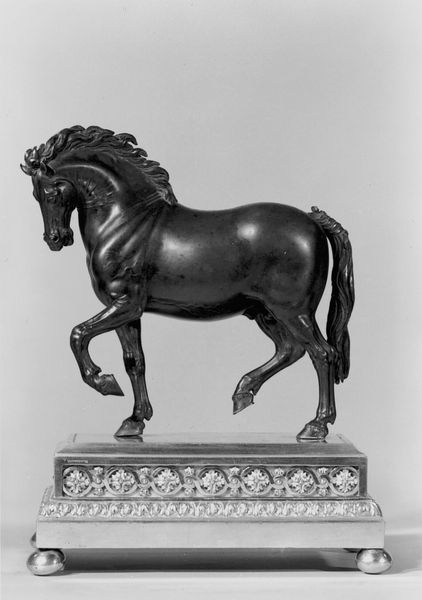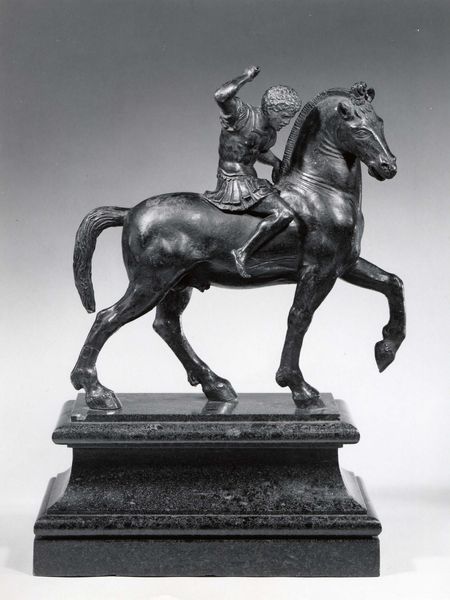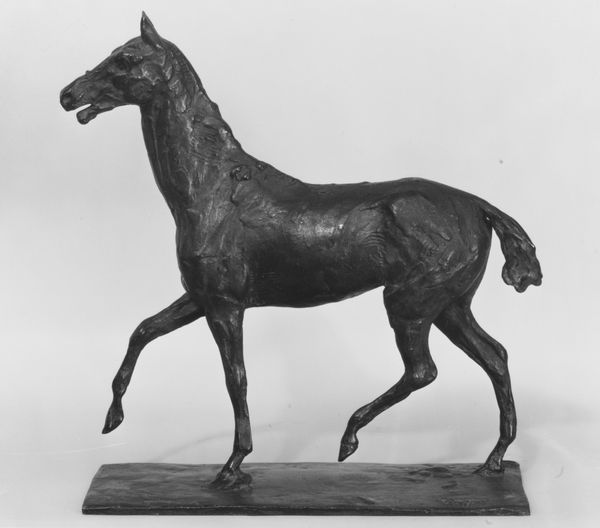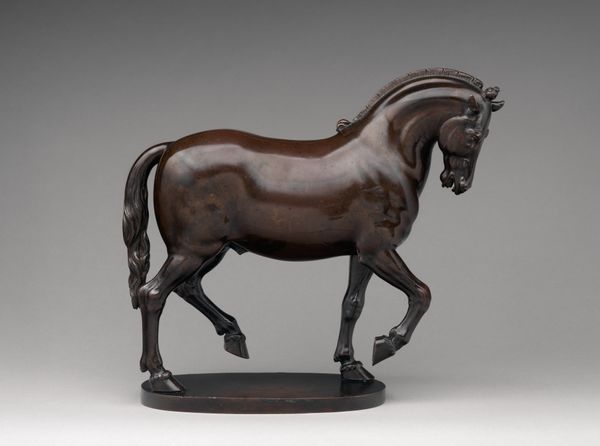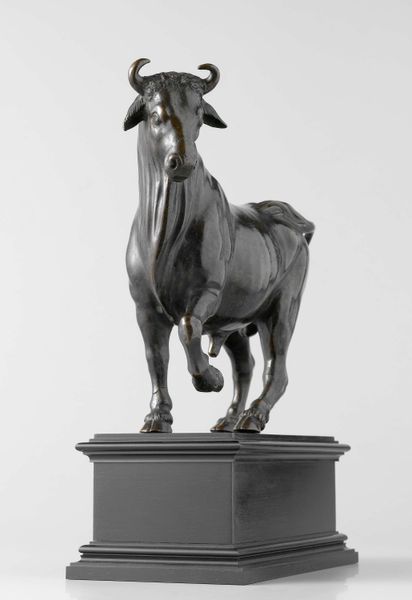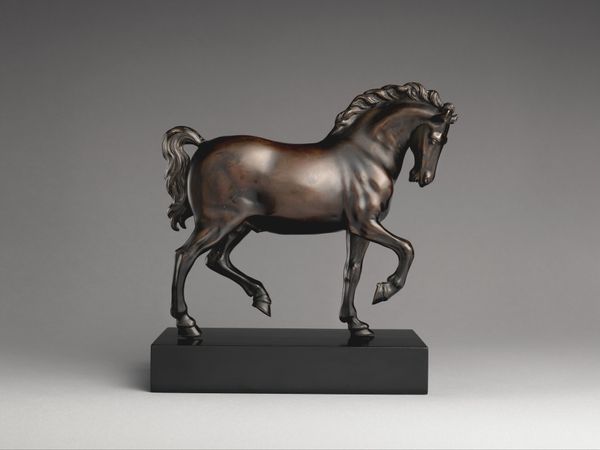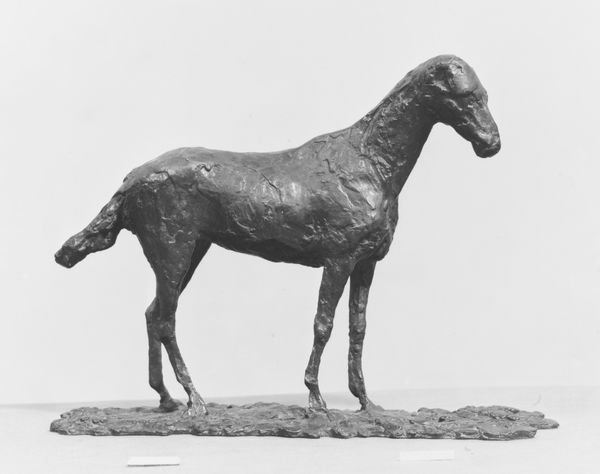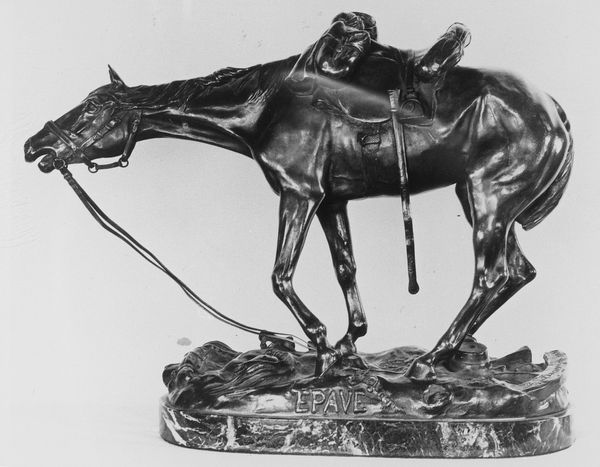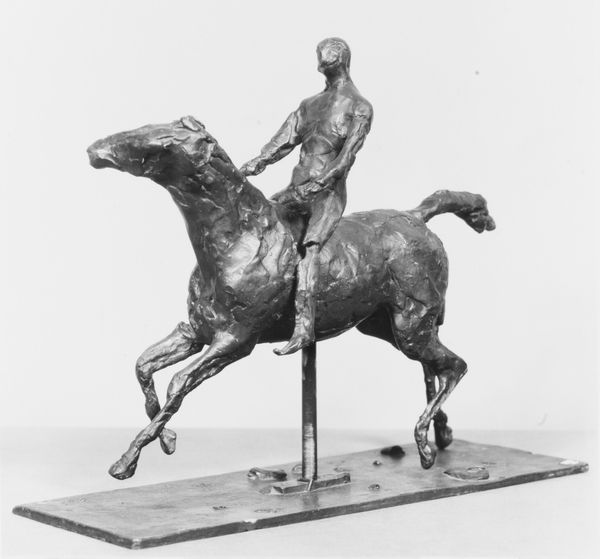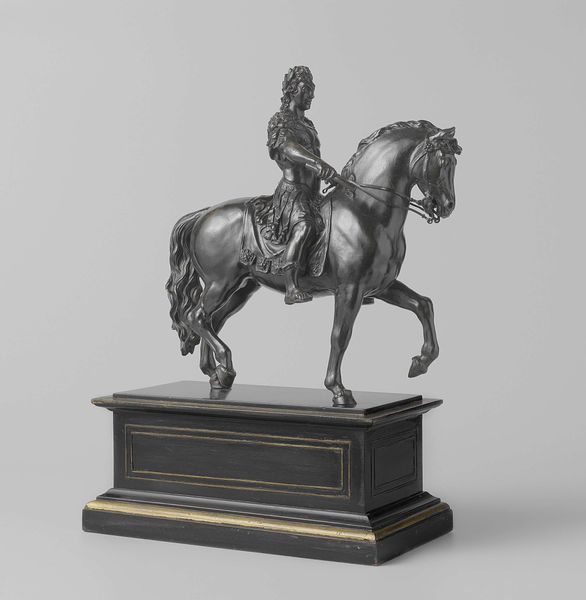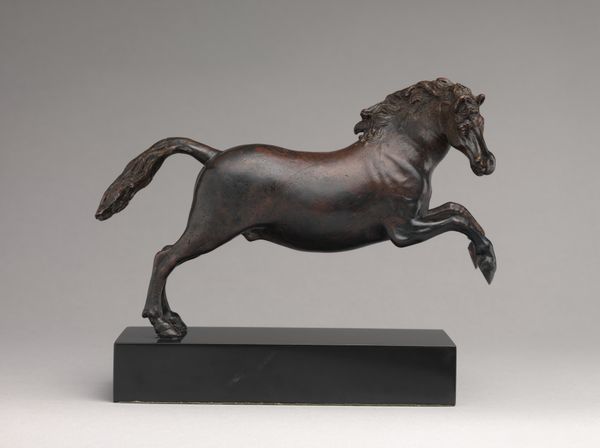
bronze, sculpture
#
sculpture
#
classical-realism
#
bronze
#
mannerism
#
figuration
#
sculpture
Dimensions: 34.3 × 27.6 × 15.9 cm (13 1/2 × 10 7/8 × 6 1/4 in. )
Copyright: Public Domain
Curator: This bronze sculpture, titled "Pacing Horse," one of a pair, dates back to between 1587 and 1650, and is attributed to Giovanni da Bologna. It currently resides here at the Art Institute of Chicago. Editor: Immediately, I'm struck by this sense of poised energy. The horse isn't static; it feels ready to step forward, like a moment perfectly captured mid-stride. Curator: Precisely. The artist’s acute understanding of equine anatomy is apparent in the rendering of musculature and dynamic equilibrium. We can explore the interplay between Classical ideals and Mannerist sensibilities here, especially visible in the slightly elongated proportions and stylized musculature. Editor: Yes, that stylized quality elevates it. I mean, it's not just about realism; there's a kind of elegant artifice. It's like capturing not just how a horse looks, but also a certain feeling about horses – pride, maybe, or grace. Curator: The bronze medium further emphasizes the inherent dynamism. The reflective surfaces catch and play with light, amplifying the sense of movement, almost like a living, breathing being caught in solid form. Editor: The dark bronze also makes it feel both solid and ephemeral, as if its spirit can fade in or out with changes of light. Even the base, ornate as it is, feels perfectly balanced – like a small stage for the horse to play out some noble scene from ancient history. I can't help but see these qualities as part of its aesthetic. It isn’t a snapshot of realism. Curator: I agree; the careful treatment of the material combined with the composition's dynamic tension elevates the subject matter, thereby pushing the very definition of a Renaissance equestrian portrait into something more elaborate, full of feeling. The horse serves as a testament to not only anatomical study, but also the idealized natural form. Editor: Looking closer, you've got to appreciate that delicate balance of restraint and raw energy in that one fleeting stride. That to me shows the mastery. I think there is a lesson for artists today, in this approach, for seeing it is more than mere copying. Curator: Yes, what ultimately triumphs is da Bologna's remarkable fusion of intellectual acuity and artistic ingenuity in this single striking form. Editor: Agreed. I'll be carrying the echo of its quiet energy in my thoughts for a while, I think.
Comments
No comments
Be the first to comment and join the conversation on the ultimate creative platform.
